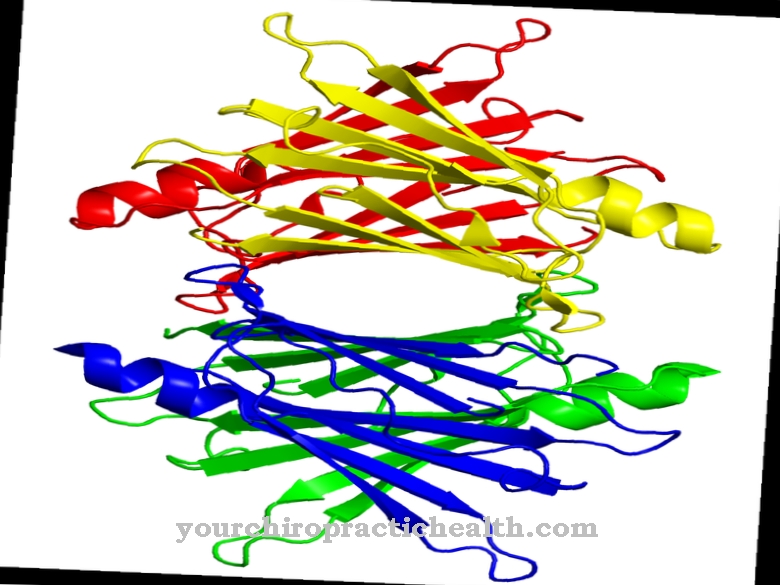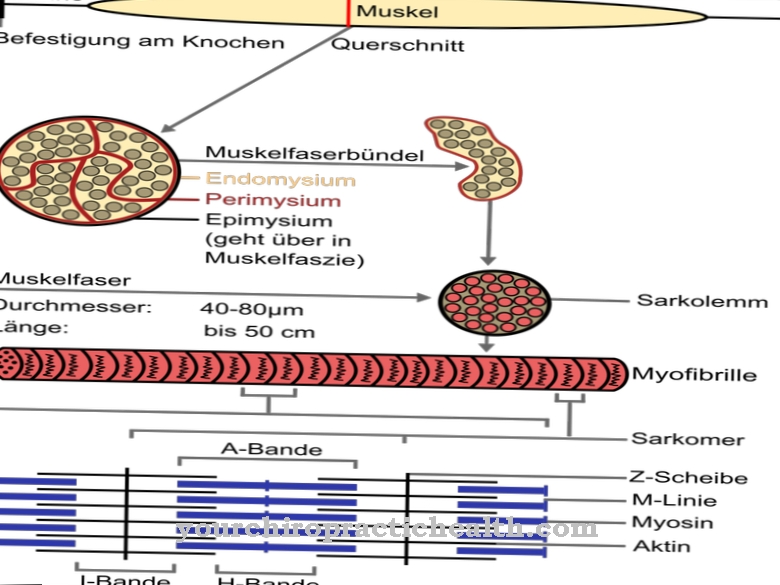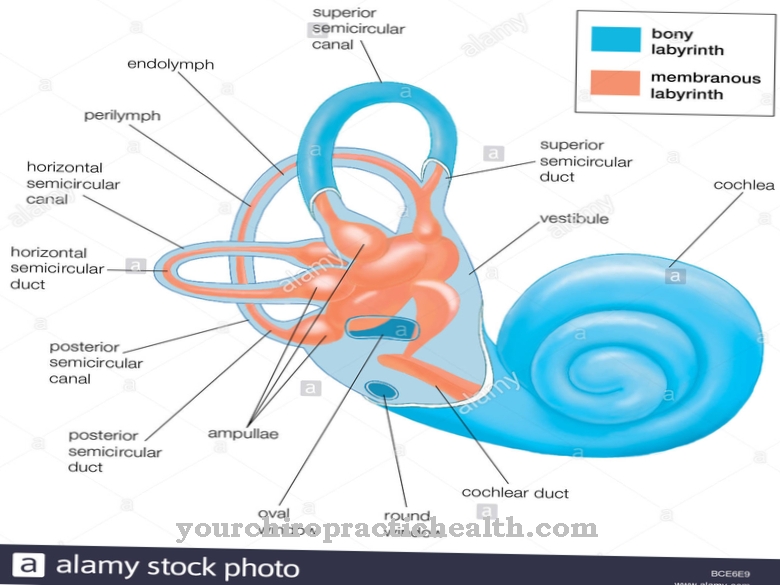As Tendon sheath This is the term used to describe the shell filled with synovial fluid (joint fluid) that usually surrounds the tendons in human and animal bodies. The tendon sheath has a protective function, but it is just as susceptible to various diseases as it is to signs of wear and tear and injuries.
What is the tendon sheath?

The Tendon sheath is the double-walled covering that is filled with the body's own joint fluid (known as synovial fluid or synovia) and usually completely surrounds a healthy vein. Here it takes on a protective and relief function.
In addition to the possibility of injuries to the tendon sheath from external influences, it is also susceptible to various overload reactions or diseases: the best-known example is tendonitis.
Anatomy & structure
The structure of the Tendon sheath basically resembles the structure of the joint capsule. Thus, in the construction of the tendon sheath, a distinction is also made between the two layers of the outer stratum fibrosum and the inner stratum synoviale.
The outer stratum fibrosum (fiber layer) consists of tight connective tissue that merges into the periosteum in the attachment area of the joint capsule. This connective tissue usually determines the mechanical strength of the entire joint and thus enables smooth movement.
The stratum synoviale, on the other hand, represents the inner layer of the joint cavity, which consists of several layers of fluid (synovialocytes). However, since there is no direct contact with the cells and the membranes, this layer is not a base tissue (epithelium).
The inner synovial layer, however, forms a double lamella, which is externally connected to the surrounding connective tissue on the one hand and internally to the tendon on the other. Between these two lamellae is a space that is filled with the viscous synovial fluid. This smear layer prevents friction and keeps the tissue supple.
Functions & tasks
As already indicated, they have Tendon sheaths in the body the function of protecting the tendons and surrounding tissue from excessive friction. Because the construction of the different layers that make up the tendon sheath and the synovial fluid it contains ensure that both friction and external pressure and stress are reduced as much as possible.
This is why the tendon sheaths are particularly strong in places where the tendons run over the joints with increased tension.
However, the stronger training relates less to the strength of the layers and more to the concentration of the synovial fluid. Because this is available in higher quantities in the heavily polluted areas.
Incidentally, the production of the synovial fluid is taken care of by the body itself. The inner layer of the joint capsule (technically the synovial membrane) is responsible for this, which produces both a thick lubricating film and the minimally thin layer of smear.
You can find your medication here
➔ Medicines for muscle painIllnesses & ailments
Due to its task and nature, the Tendon sheath but not only because of the high stress that occurs with fast, constant or strenuous movement sequences, very susceptible to overstimulation.
Typical pathological changes that affect the tendon sheaths are commonly referred to as tendovaginopathies in medicine. Because overuse or injury to the tendon sheath can be the cause of tendovaginitis (tendinitis).
Tendonitis is not only one of the most common diseases of the tendon sheath, but also of the hands. It usually manifests itself in severe, stabbing and pulling pain and can occur anywhere where tendon sheaths are present. However, as already indicated, tendinitis occurs particularly often in the area of the wrists.
There are usually five different types of tendonitis: serous, fibrinous, necrotizing, purulent and phlegmonous tendovaginitis. Serous tendonitis affects the lubricating film, fibrinous tendovaginitis affects the fibrous tissue, with necrotizing inflammation parts of the tissue die, purulent inflammation is a serious form of tendovaginitis and phlegmonous tendovaginitis has been shown to spread.
Depending on the type of tendonitis, it must be treated with antibiotics, with plenty of rest, with cooling and with painkillers.













.jpg)

.jpg)
.jpg)











.jpg)